Dear Internet,
I always get a kick out of the reaction my friends and family have when I tell them I make my own stock. I’ll admit it sounds like level three stuff, but the truth is — making stock is pretty basic. It also happens to be a great way to practice “no waste” cooking. It is so simple that I have a mantra in my kitchen, “Always be making stock!”
To be clear — I’m defining “no waste” cooking as setting aside the non-edible components of
A few
- Bones from beef short ribs or cooking water from a
slow cooked large cut of meat like brisket CAN BECOME beef stock - Bones and other scraps from a whole roasted chicken [like the grab and go ones from your grocery store hot case] CAN BECOME chicken stock
- Bones from baby back ribs or cooking water from a
slow cooked large cut of meat like pork shoulder CAN BECOME pork stock - Shells from lobster or crab or scraps from fish fillets CAN BECOME seafood stock
- Dried mushrooms or cheese from rinds like parmesan CAN BECOME vegetarian stock
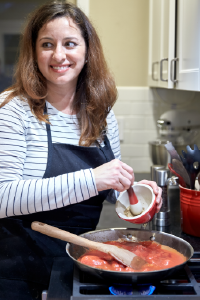
New to SooN COOKING?
For a food blog, I know the approach is unconventional. There are two very specific reasons why. Click here to find out more.
I typically freeze the stock and then use it to enhance dishes like risotto or to create a dish all on its own such as soup. Using stock is such a critical part of my cooking that in classic SERVE or RESERVE fashion — you will be certain to find at least 5-10 frozen varieties in my freezer at any given time.
If you have been making your own stock, I would love to know your best practices. If you haven’t been doing it and are willing to give it a try, I’ve outlined the directions below.
Happy SooN COOKING,

Get Setup for Success
This post contains affiliate links which doesn’t impact YOUR customer experience. What it means is that when you buy something AFTER clicking on the links THEN the merchant may pay me a commission for the traffic and revenue generated from that sale. To forgo the affiliate process, you would need to separately search for the hyperlinked items listed below on the internet. Curious to learn more about this process? https://soonliving.com/start-here/legal/ has the full details.
Suggested Hardware
- Stock Pot
- Electric Pressure Cooker [Instant Pot]
- Mesh colander
- Cole & Mason Salt and Pepper Grinder Set
- Ziploc Bags or silicone storage bags
- Ice cube mold
Ingredients
- Your choice “no waste” ingredients [chicken bones, beef bones, lobster shells, cheese rinds, dried mushrooms]
- 1 tsp salt [~10 turns on the grinder]
- 1 tsp Pepper [~10 turns on the grinder]
- 1 Bay Leaf
- 3 sprigs or 1 tsp of Thyme
- 2 sprigs or 1 tsp of Oregano
- 2 sprigs of Rosemary
- 3 cloves of Garlic
- 2 cups of Mirapoix
- at least 6-quarts of Water
Other Critical Information
This is a SooN COOKING Essential Kitchen Technique™ recipe. It will give you an overview of how to do this recipe so that you can get a foundational understanding
New to SooN Cooking?
No problem! Some quick background on the concept: I love to cook and realized that I often had to adjust my meal plan to
Check out the SooN Cooking About page for the complete details.
Choose your SooN ADVENTURE™
SooN COOKING Original
#1: assemble the ingredients and pick a stock path
First off, I typically start my stock making journey by traveling down one of these two paths:
Path A: Following another recipe which produced inedible scraps/leftovers that are perfect for transforming into stock. If I’m on this path, I would now move onto #2: make your stock.
Path B: Freeze the scraps/leftovers from the recipe [that I made in the first example] for later use. On this path, the scraps/leftovers typically stay in frozen reserves until needed — which at that point I would move onto #2: make your stock.
A tangible example of this path would be, for instance, if I steamed four fresh lobsters for dinner. [Honestly, for fresh lobster it would have to be a very “special” dinner, like New Year’s Eve]. After dinner, I would check my freezer inventory to count the number of frozen LOBSTER STOCK servings I already had. [I aim to have at least two of each variety at all times.] If I had enough frozen LOBSTER STOCK servings on hand, then I would just throw all the shells from the lobsters I just had for dinner in a Ziploc and freeze those as is.
So now
#2: make your stock
Have you ever heard someone refer to the largest pot in the kitchen as a “stock pot”? Here is why!!!! Start by grabbing your largest pot [which is hopefully 8-quarts or more]. Now literally throw all the ingredients into the pot and cover it with water and add the pot lid. Bring it to a boil. Once the liquid is boiling, turn it to low and then wait. I typically let the stock cook until the liquid level has reduced by half. A tangible example of this concept is to say that in your 8-quart pot you start with 7-quarts of liquid — stop after the water reaches the 3.5-quarts level. This can take anywhere from 4-6 hours.
Important note: you should eyeball the whole “reduced by half” stopping point. If things have been cooking for 5 hours and you have to go
#3: extract your stock
Remove the pot from heat and let everything cool for at least 15 minutes. Then use the mesh colander to separate the liquid gold [stock] from
#4: store, seal, label and freeze for later use
Once the stock is finished, follow this two-part SERVE or RESERVE storage process:
Part One | Ziploc: divide 3/4 of it up into quart size Ziploc bags. Use the Ziploc stock as a soup base or to add extra flavor to
Part Two | Stock Cubes: Place the remaining 1/4 of it into the ice cube mold trays. Use the ice cube stock to add flavor to PAN-SEARED CHICKEN or to make a SIMPLE PAN SAUCE
Looking for Something?
Search SooN LIVING and let us know if you don't find what you are looking for!
SooN COOKING Express
This variation is my preferred method for stock because it is the most efficient. First, I use an Instant Pot because it enables me to walk away after throwing everything together. If you don’t have an Instant Pot but see yourself adopting this technique long term, you will get a fast return on your investment if you choose to purchase one.
Step #1: from the SooN COOKING ORIGINAL recipe applies.
For step #2: make your stock: Throw all your ingredients into the Instant Pot and select “manual”. Now set the timer to “max” [which is 120 minutes]. Full transparency — I typically make stock in the Instant Pot at night. I’ll throw everything in and then head to bed. Therefore, I’m usually sleeping when the cooking cycle completes but since the Instant Pot will automatically switch to “keep warm” mode, it will rest for the rest of the night. I then wake up to beautiful stock in the morning!
From here, I follow the same directions in #3 and #4 of the SooN COOKING ORIGINAL recipe.
The best news about using an Instant Pot to make stock is that NONE of the liquid escapes. So while
SooN COOKING Vegetarian
For
Once you have picked your vegetarian stock path — the steps in either the SooN COOKING ORIGINAL or the SooN COOKING EXPRESS recipes will work.
Not familiar with a Vegetarian diet? Learn more using the SooN LIVING Dietary Requirements Decoder.
SooN COOKING Kosher
Make sure to use Kosher certified products when serving any dishes that use stock to someone who keeps Kosher. Once you have picked your stock path — the steps in either the SooN COOKING ORIGINAL or the SooN COOKING EXPRESS recipes will work.
Not familiar with a Kosher diet? Learn more using the SooN LIVING Dietary Requirements Decoder.
SooN COOKING Halal
Make sure to use Halal certified products when serving when serving any dishes that use stock to someone who keeps Halal. Once you have picked your stock path — the steps in either the SooN COOKING ORIGINAL or the SooN COOKING EXPRESS recipes will work.
Not familiar with a Halal diet? Learn more using the SooN LIVING Dietary Requirements Decoder.
SooN COOKING Celiac
Make sure none of the ingredients used to make the stock have gluten in them. Once you have picked your stock path — the steps in either the SooN COOKING ORIGINAL or the SooN COOKING EXPRESS recipes will work.
Not familiar with a Celiac diet? Learn more using the SooN LIVING Dietary Requirements Decoder.
SooN COOKING as a Photo Essay
#1: assemble the ingredients and pick a stock path
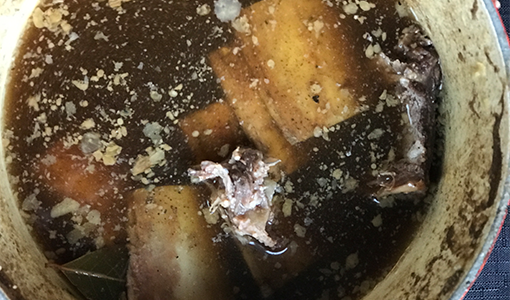
Path A: Make stock following another recipe. Inedible beef short rib scraps/leftovers shown here.
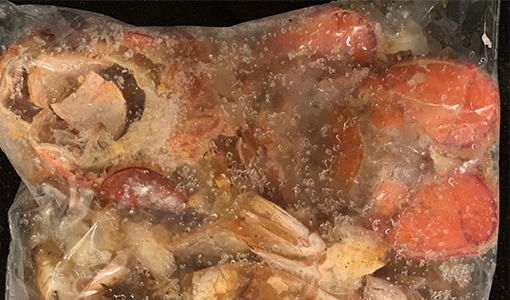
Path B: Make stock from frozen scraps/leftovers. Inedible lobster shells shown here.
#2: make your stock
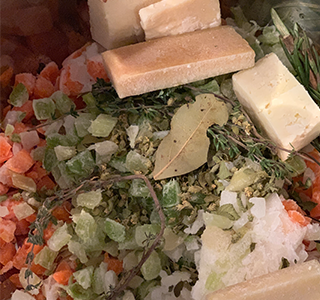
Assemble your ingredients. (Parmesean stock shown here).
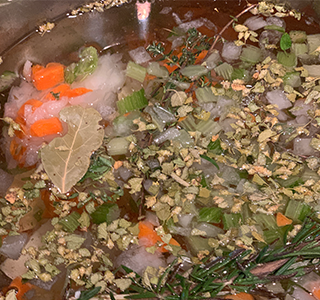
Add water and cook.
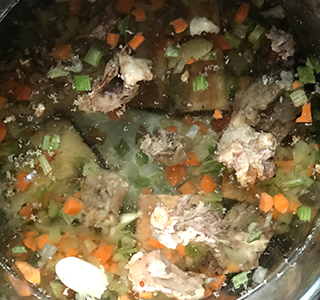
Cook until the liquid has reduced by half or 120 minutes in the Instant Pot (shown here).
#3: Extract Your Stock
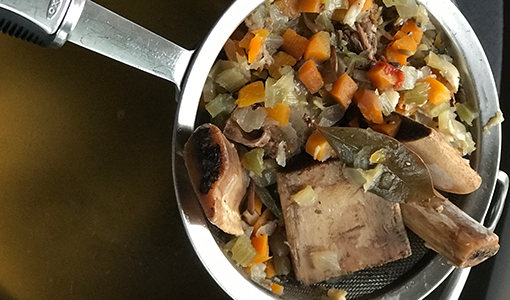
Strain liquid with a mesh strainer. (Beef stock shown here.)
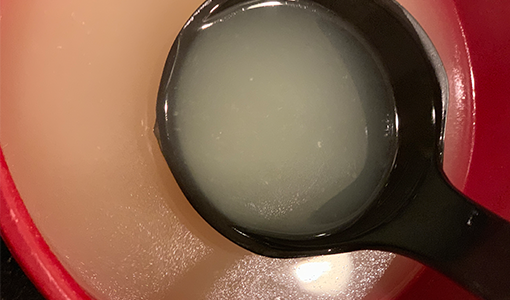
Discard all other ingredients, congratulations on your liquid gold! (Parmesean stock shown here.)
#4: store, seal, label and freeze for later use
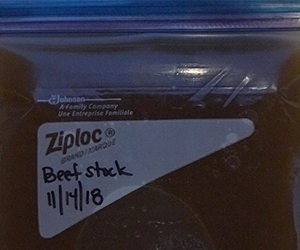
Divide 3/4 of it up into quart size Ziploc bags to use as a base in main dishes.
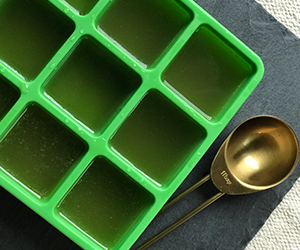
Place the remaining 1/4 of it into the ice cube mold trays.
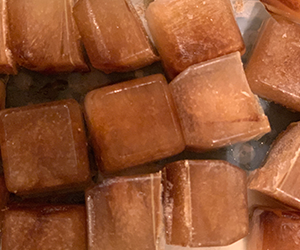
Use the stock cubes to add extra flavor or to make a finishing sauce.
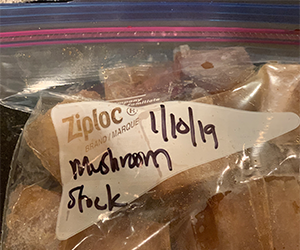
Label and freeze for later use.
Become An Official SooN LIVING Fan*
Learn how to tame YOUR chaos with exclusive content, productivity hacks and the occasional funny story.
*A low-risk time commitment; unsubscribe anytime.
Feedback? Input? Questions?
We cannot wait to hear from you!


These photos are beautiful. I never fully appreciated the value of stock. I am sold!
Happy to hear that Lisa, thank you! I cannot wait to hear how it goes when you make some!